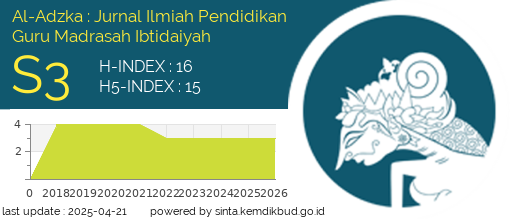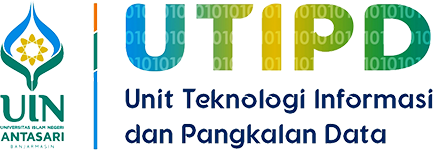Coding for Young Learners: Enhancing Computational Thinking and Creativity in Elementary Education
DOI:
https://doi.org/10.18592/aladzkapgmi.v15i1.16103Keywords:
Coding Education, Computational Thinking, Elementary Education, Teacher Training, Digital LearningAbstract
Coding skills have become essential for young learners to develop computational thinking and creativity. This study explores the implementation of coding education to enhance computational thinking among elementary school students, particularly at SD Negeri 21 Dauh Puri Denpasar, where technological access is limited. A case study approach was applied with 28 fifth-grade students. Data were collected through observations, interviews, documentation, and questionnaires. Findings revealed increased computational thinking scores from 56.3 to 74.8 after Scratch-based coding lessons. Significant improvements were observed in decomposition, pattern recognition, and algorithmic thinking, although abstraction remained challenging. Students demonstrated high enthusiasm, especially in creating animations and games. However, limited infrastructure and insufficient teacher training hindered optimal implementation. The study concludes that coding education can foster students' critical thinking and creativity but must be supported by structured teacher training and adequate technological resources. It recommends developing innovative and sustainable learning strategies to make coding an integral part of the elementary education curriculum in Indonesia.References
Adigüzel, S., Eryilmaz, S., Gencer, T., & Göksu, H. (2023). Coding activities in IT courses through the lenses of IT teachers. Journal of Educational Technology and Online Learning, 6(2), 384–402. https://doi.org/10.31681/jetol.1219963
Calder, N., & Rhodes, K. (2023). Coding and mathematics: How did coding and collaboration facilitate thinking? Australasian Journal of Technology Education, 8, 98–105. https://doi.org/10.15663/ajte.v8i.90
Dia, I. O., Putra, Z. H., Witri, G., Dahnilsyah, & Aljarrah, A. (2024). Development of a Traditional Game-Based Computational Thinking Supplementary Textbook for Elementary School Students. Mathematics Teaching-Research Journal, 16(2), 185–206. https://files.eric.ed.gov/fulltext/EJ1442388.pdf
Ergin, A. Z., & Ercan, Z. G. (2022). The Coding Skills of Pre-School Teacher Candidates. International Journal of Curriculum and Instruction, 14(1), 1052–1071. https://ijci.net/index.php/IJCI/article/view/801
Fitriyah, R. (2024). Effectiveness of Canva-Based Interactive Animation Media in Enhancing Learning Interest of Second-Grade Madrasah Ibtidaiyah Students. Al-Adzka : Jurnal Ilmiah Pendidikan Guru Madrasah Ibtidaiyah. 14(2), 135–150. https://doi.org/10.18952/aladzkapgmi.v12i2.13896
Gümüş, M. M., Kukul, V., & Korkmaz, Ö. (2024). Relationships between middle school students’ digital literacy skills, computer programming self-efficacy, and computational thinking self-efficacy. Informatics in Education, 23(3), 571–592. https://doi.org/10.15388/infedu.2024.20
Istiqomah, N., & Fanny Novika. (2024). Pengenalan Coding Membuat Game pada Siswa Sekolah Dasar menggunakan Scratch. JURPIKAT (Jurnal Pengabdian Kepada Masyarakat), 5(3), 925–938. https://doi.org/10.37339/jurpikat.v5i3.1827
Iyamuremye, A., & Nsabayezu, E. (2022). Mathematics and Science Teacher’s Conception and Reflection on Computer Programming with Scratch: Technological and Pedagogical Standpoint. International Journal of Education, Training and Learning, 6(1), 11–16. https://doi.org/10.33094/ijetl.v6i1.488
Jayanti, D., Septiani, J. I., Sayekti, I. C., Prasojo, I., & Yuliana, I. (2021). Pengenalan Game Edukasi sebagai Digital Learning Culture pada Pembelajaran Sekolah Dasar. Buletin KKN Pendidikan, 3(2), 184–193. https://doi.org/10.23917/bkkndik.v3i2.15735
Karakaya Cirit, D. (2022). Coding in Preschool Science and Mathematics Teaching: Analysis of Scratch Projects of Undergraduate Students. International Journal of Contemporary Educational Research, 9(3), 460–475. https://doi.org/10.33200/ijcer.1031848
Khairullina, A., & Prastowo, A. (2024). Implementation of ICT-Based Problem-Based Learning Model to Improve Higher Order Thinking Skills in IPAS Learning in Madrasah Ibtidaiyah. Al-Adzka : Jurnal Ilmiah Pendidikan Guru Madrasah Ibtidaiyah. 14(2), 151–161. https://doi.org/10.18952/aladzkapgmi.v14i2.13282
Kirom, S., & Rosyida, D. A. (2024). Educational Game " Sianting " to Improve Literacy and Anti- Bullying Education Using Problem-Solving Approach. Al-Adzka : Jurnal Ilmiah Pendidikan Guru Madrasah Ibtidaiyah. 14(2), 189–205. https://doi.org/10.18952/aladzkapgmi.v14i2.14031
Kuleli, S. (2024). An Examination of the Self-Efficacy Perceptions of Eighth-Grade Students Regarding Computational Thinking Competencies. 23(4), 21–38.
Metin, S., Basaran, M., & Kalyenci, D. (2023). Examining coding skills of five-year-old children. Pedagogical Research, 8(2), em0154. https://doi.org/10.29333/pr/12802
Muhammad, I., Rusyid, H. K., Maharani, S., & Angraini, L. M. (2023). Computational Thinking Research in Mathematics Learning in the Last Decade: A Bibliometric Review. International Journal of Education in Mathematics, Science and Technology, 12(1), 178–202. https://doi.org/10.46328/ijemst.3086
Muklason, A., Riksakomara, E., Mahananto, F., Djunaidy, A., Vinarti, R. A., Anggraeni, W., Nurita, R. T., Utamima, A., Fauzia, R., Theresia, L. W., Fikri, M. A., Propitadewa, H., Habibah, J. H., Prasetyo, J. D., Permatasari, S. T. I., Risnina, N. N., Tsaniyah, N. D., & Maulana, M. D. (2023). Coding for Kids: Pengenalan Pemrograman untuk Anak Sekolah Dasar sebagai Literasi Digital Baru di Industri 4.0. Sewagati, 7(3). https://doi.org/10.12962/j26139960.v7i3.506
Özkan, N., Özgeldi, M., & Uzun, E. (2022). 8th Graders’ Interpretation of Equal Sign in Scratch: Pan Balance Activities. Education Quarterly Reviews, 5(4), 79–97. https://doi.org/10.31014/aior.1993.05.04.607
Putro, Y. T. M., & Astuti, R. (2024). Penerapan Scratch dalam Pembelajaran Coding Siswa Sekolah Dasar. Emergent Journal of Educational Discoveries and Lifelong Learning (EJEDL), 1(4), 21. https://doi.org/10.47134/emergent.v1i4.37
Ramadhan, F. A., Muhith, A., Usriyah, L., Islam, U., Kiai, N., Achmad, H., & Jember, S. (2023). Design of Electronic-Based Handout Teaching Materials with Problem-Based Learning Nuances in Learning Mathematics. EDUHUMANIORA : Jurnal Pendidikan Dasar, 15(2), 121–134. https://doi.org/10.17509/eh.v15i2.56031
Samadi, M., & Handayani, A. N. (2022). Media Pembelajaran Interaktif Coding’Bahasa C’untuk Anak-anak Berbasis Aplikasi Augmented Reality dalam Menyongsong. Jurnal Inovasi Teknologi Dan Edukasi, 2(7), 326–338. https://doi.org/10.17977/um068v1i72022p326-338
Smith, A. B. (1993). Early childhood educare: Seeking a theoretical framework in vygotsky’s work. International Journal of Early Years Education, 1(1), 47–62. https://doi.org/10.1080/0966976930010105
Sugiyono. (2013). Metode Penelitian Pendidikan (Pendekatan Kuantitatif, Kualitatif, dan R&D). Alfabeta.
Tanya, M., Diah, K., Rahmah, A., & Florian, H. (2024). Pelatihan Coding Berbasis Project Based Learning ( PjBL ) Menggunakan Platform Scratch untuk Sekolah Dasar. 3(5), 283–291. https://doi.org/10.55824/jpm.v3i5.437
Theelen, H., Vreuls, J., & Rutten, J. (2024). Doing Research with Help from ChatGPT: Promising Examples for Coding and Inter-Rater Reliability. International Journal of Technology in Education, 7(1), 1–18. https://doi.org/10.46328/ijte.537
Thompson, J., & Childers, G. (2021). The impact of learning to code on elementary students’ writing skills. Computers & Education, 175, 104336. https://doi.org/10.1016/j.compedu.2021.104336
Totan, H. N., & Korucu, A. T. (2023). The Effect of Block Based Coding Education on the Students’ Attitudes about the Secondary School Students’ Computational Learning Skills and Coding Learning: Blocky Sample. Participatory Educational Research, 10(1), 443–461. https://doi.org/10.17275/per.23.24.10.1
Wooten, J. O., Cuevas, J. A., The, J. A., Wooten, J. O., & Cuevas, J. A. (2024). The Effects of Dual Coding Theory on Social Studies Vocabulary and Comprehension in Elementary Education. International Journal on Social and Education Sciences, 6 (4). https://doi.org/10.46328/ijonses.696
Yang, Z., Shaffer, P. M., Hagan, C., Dubash, P., & Bers, M. (2023). Impact Study of the Coding as Another Language Curriculum. March. https://eric.ed.gov/?id=ED626865
Yildirim, E., & Uluyol, Ç. (2023). Developing Computational Thinking Scale for Elementary School Students and Examining Students’ Thinking Levels According to Different Variables. Journal of Learning and Teaching in Digital Age, 8(1), 113–123. https://doi.org/10.53850/joltida.1176173
Yu, Y. H., Hu, Y. N., & Zhang, J. S. (2013). Vygotsky’s Zone of Proximal Development: Instructional Implications and Teachers’ Professional Development. Applied Mechanics and Materials, 411–414(4), 2952–2956. https://doi.org/10.4028/www.scientific.net/AMM.411-414.2952
Zeng, M., & Zhu, F. (2021). Secure Coding in Five Steps. Journal of Cybersecurity Education, Research and Practice, 2021(1). https://doi.org/10.62915/2472-2707.1076
Downloads
Published
How to Cite
Issue
Section
License
Copyright (c) 2025 Hilmiyah, Abd Muhith, Syamsul Bahri

This work is licensed under a Creative Commons Attribution 4.0 International License.
Authors who publish with this journal agree to the following terms:
- Authors retain copyright and grant the journal right of first publication with the work simultaneously licensed under a Creative Commons Attribution 4.0 International that allows others to share the work with an acknowledgement of the work's authorship and initial publication in this journal.
- Authors are able to enter into separate, additional contractual arrangements for the non-exclusive distribution of the journal's published version of the work (e.g., post it to an institutional repository or publish it in a book), with an acknowledgement of its initial publication in this journal.
- Authors are permitted and encouraged to post their work online (e.g., in institutional repositories or on their website) prior to and during the submission process, as it can lead to productive exchanges, as well as earlier and greater citation of published work.












